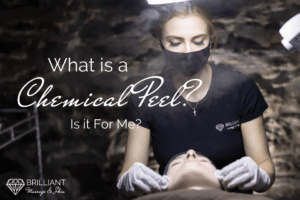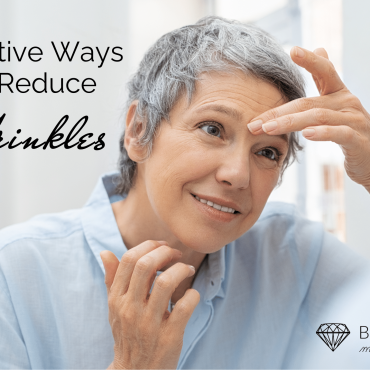What Is A Chemical Peel, and Is It for Me?


They are a popular anti-aging and rejuvenating treatment; peels and resurfacing treatments encourage your natural skin cells to renew, stimulating the skin’s natural collagen production and helping treat skin concerns like fine lines and wrinkles. Resurfacing peels are more likely to be milder ‘superficial’ peels.
There are three main types of chemical peel used by estheticians in the US.
Superficial Peel:
This is a type of peel that involves using mild acid. Usually a type of alpha-hydroxy acid. It is designed only to penetrate the outer layer of the skin. This works to exfoliate the skin gently. This not only improves its appearance but also helping to reduce the signs of mild skin discoloration, hyper-pigmentation, and rough skin. It’s also a popular treatment for people looking for an effective way to refresh their facial complexion and brighten up the appearance of the skin on the face, neck, chest, and even the hands. A superficial peel may need to be repeated monthly to keep up the results.
Medium Peel:
This is a stronger version of the chemical peel. This involves applying a type of glycolic acid to the skin, which penetrates the outer and middle layers of the skin. It helps to remove any damaged skin cells. A medium peel suits people looking for a stronger treatment who want to improve the appearance of any age spots, fine lines, and wrinkles and treat moderate skin discoloration. A medium peel can be repeated every 6 – 12 months.
Deep Peel:
While superficial and medium strength chemical peels are effective, they will need a follow-through treatment as the effects are not permanent. While being a riskier option, a deep peel is longer lasting and doesn’t need to be repeated. This involves applying a stronger type of acid, usually a phenol, and left on for around 30 minutes to deeply penetrate through to the middle layer of skin. It’s very effective for treating lines, age spots, and shallow scars.
You might also need a local anesthetic for a deep peel, as it can be uncomfortable. Your heart and blood pressure will need to be monitored during the procedure, too. The procedure can also leave you with peeling, redness, and discomfort for some time afterward, so there will be downtime involved. There will be a dramatic improvement in your skin appearance afterward, though, which should be permanent.
What Type of Chemical Peel Is for Me?
The best advice is to speak to a professional; ask your esthetician or skin therapist about which type of peel is best to address your specific skin concerns. Deep peels are not usually suitable for darker skin as they can have an unwanted lightening effect.
People who struggle with difficult-to-treat skin conditions or need to repair the effects of sun damage, acne, or scarring may benefit from a deeper chemical peel to improve the look and texture of their complexion. Most people will benefit from a light, exfoliating, or resurfacing peel.
Who Shouldn’t Have A Chemical Peel?

You will also have to avoid sun exposure before your treatment, along with any facial waxing or exfoliating treatments. Always insist on a patch test at least 24 hours before your peel to make sure that you don’t have an allergic reaction to the chemicals used in the peel.
Call us now or book online to schedule your chemical peel session with our licensed esthetician.
Brilliant Massage & Skin
Burlington, Vermont


